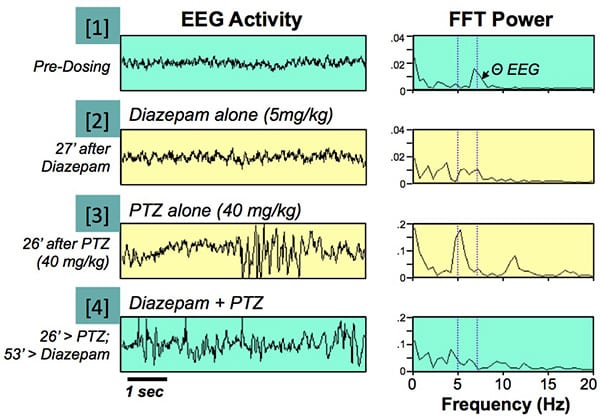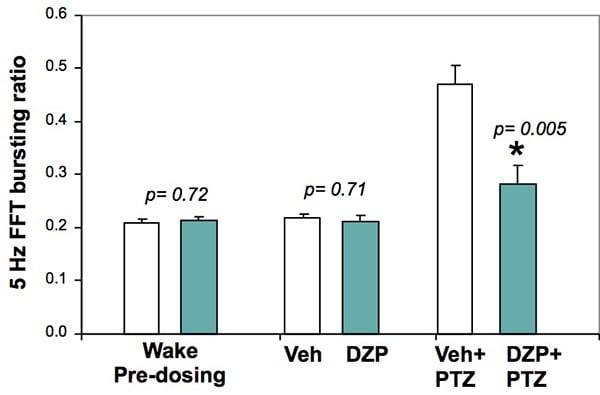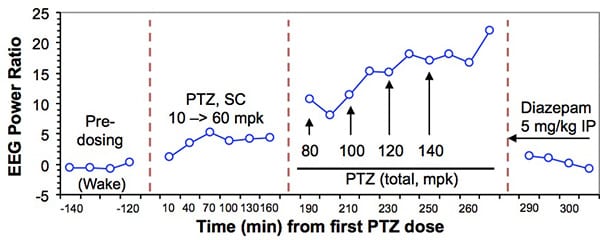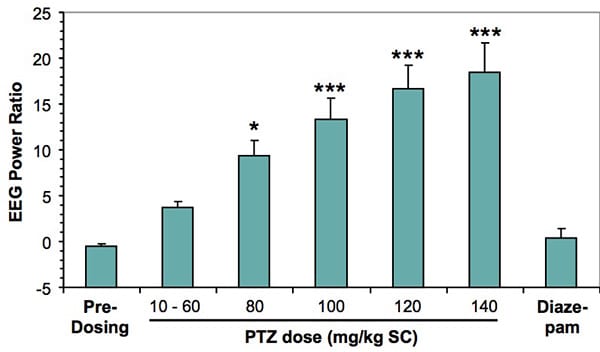EEG Pro- and Anti- Convulsant Evaluation
Discover how Melior’s unique phenotypic screening platforms can uncover the untapped value of your candidate therapeutic
Pro- or anti-convulsant activity can be evaluated using EEG power analysis and can be more sensitive than models utilizing chemical or electrical stimulation and behavioral outcome measures.
For example, quantitative anti-convulsant activity can be evaluated using sub-convulsant doses of pentylenetetrazole (PTZ) that produce characteristic EEG frequency changes that can be quantitatively analyzed for several hours.

Sub-convulsant dose of PTZ increases low-frequency EEG power at 5 Hz for several hours after administration.
[1] Normal waking EEG pre-dosing. Note peak in FFT record at 7-8 Hz corresponding to theta band.
[2] Diazepam (5 mg/kg) alone has little effect on EEG (27 min post dosing).
[3] This animal was treated with Vehicle, then 27 min later given PTZ (40 mg/kg). EEG recorded 26 min later shows periodic bursting which produced a significant increase in FFT amplitude at 5 Hz, distinct from theta EEG (note 5x decrease in FFT scale).
[4] Same animal as panel [2] also received PTZ at same time as animal in panel [3]. In this case, Diazepam almost completely blocked PTZ-induced bursting.
Bursting induced by PTZ was quantified by frequency analysis, and the effect of Diazepam evaluated. Graph above shows significant effect of Diazepam (5 mg/kg) in suppressing PTZ-induced bursting (paradigm as in Figure 1; N= 5 / group). This paradigm potentially allows repeat testing of animals to determine the effects of chronic or sub-chronic administration of PTZ or anti-convulsant drug. *p<0.005.
Bursting can be induced in mice by dose-escalation of PTZ. The graph above shows the increase in EEG power at 4-6 Hz over a period of 280 min during successive administration of PTZ doses totaling 140 mg/kg. Diazepam (5 mg/kg) was then administered and within minutes suppressed the bursting.
Quantitative evaluation of bursting in mice and suppression by Diazepam (5 mg/kg). *p<0.05; ***p<0.001




 Interested in evaluating Pro- or Anti- Convulsant activity of your compound using EEG?
Interested in evaluating Pro- or Anti- Convulsant activity of your compound using EEG?